Users of equipment and factory owners must comply with DSEAR and must:
Identify what dangerous substances are in their workplace and what the fire and explosion risks are
Put control measures in place to either remove those risks or, where this is not possible, control them
Put controls in place to reduce the effects of any incidents involving dangerous substances
Prepare plans and procedures to deal with accidents, incidents and emergencies involving dangerous substances
Make sure employees are properly informed about and trained to control or deal with the risks from the dangerous substances
Identify and classify areas of the workplace where explosive atmospheres may occur and avoid ignition sources in those areas
To support the classification of the workplace there are two standards:
Gas according to BS EN 60079-10-1 Explosive atmospheres, Classification of areas, Explosive gas atmospheres
Dust according to BS EN 60079-10-2 Explosive atmospheres, Classification of areas, Explosive dust atmospheres
A place in which an explosive atmosphere caused by mixtures of air and gases, vapours, mists or air/dust mixtures are unlikely to occur and if they do occur, do so infrequently and for a short period of time only.
A place in which an explosive atmosphere caused by mixtures of air and gases, vapours, mists or air/dust mixtures are likely to occur
A place in which an explosive atmosphere caused by mixtures of air and gases, vapours, mists or air/dusts mixtures are highly likely to occur and are present continuously, for long periods of time or frequently.
Classified area – Zone 20 or 0 Equipment Group II Category 1
Classified area – Zone 21 or 1 Equipment Group II Category 2
Classified area – Zone 22 or 2 Equipment Group II Category 3
Where an area is classified, equipment should be selected and used on the basis that is does not create an ignition source for the atmosphere during its intended use and the frequency the atmosphere is present.
A risk assessment is often used to confirm that the equipment used in the area is safe for use.
Since 1st July 2003 all new equipment for use in classified areas has needed to comply with 94/9/EC, 2014/34/EU or EPS in Great Britain.
Since 1st July 2006 existing equipment used within a classified area has needed to have been assessed, and if needed, modified, to ensure it is safe for use.














